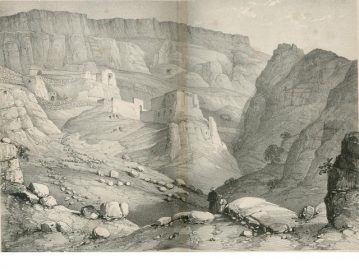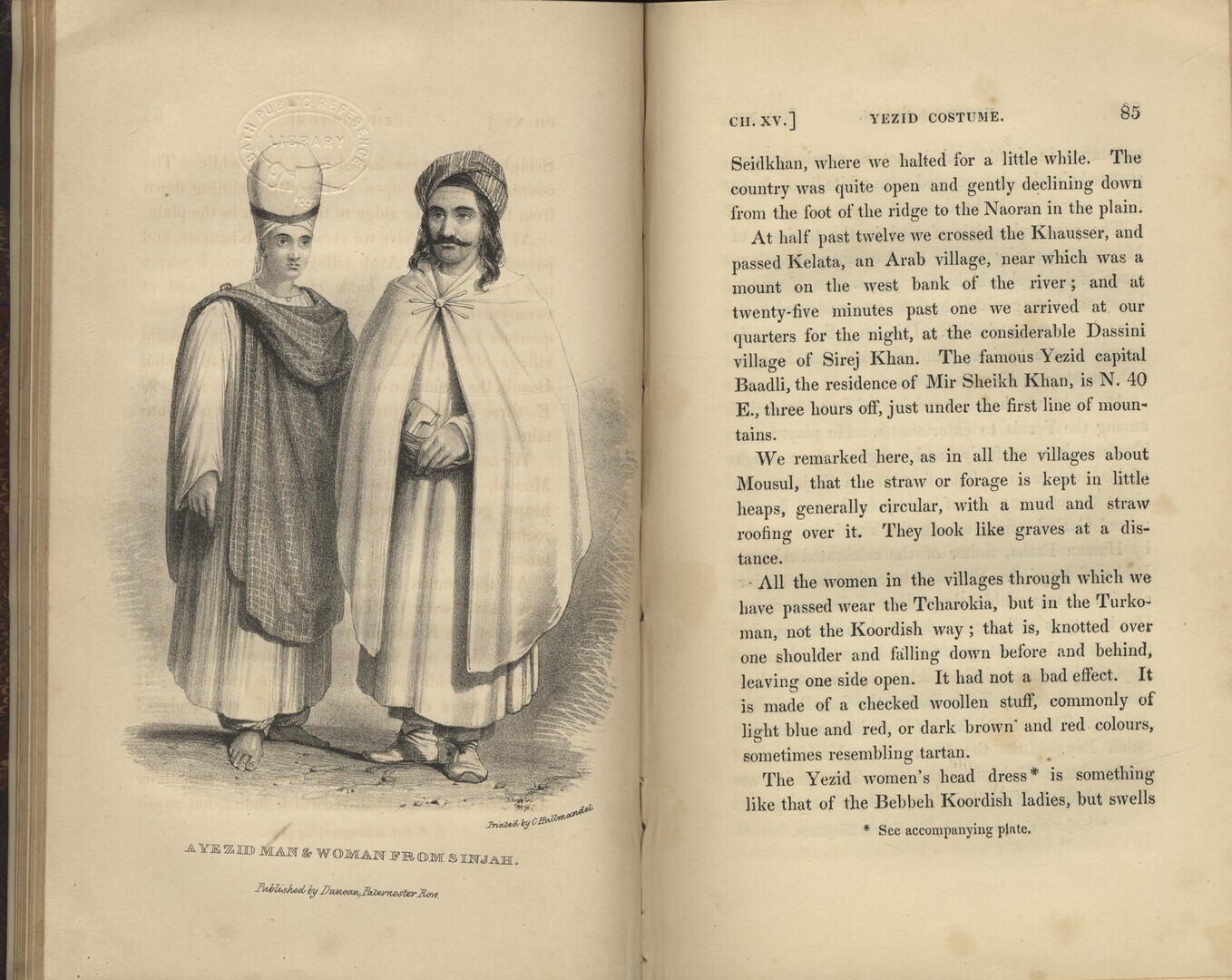Narrative of a Residence in Koordistan, and on the Site of Ancient Nineveh. With journal of a voyage down the Tigris to Bagdad and an account of a visit to Shirauz and Persepolis. TWO VOLUMES.
Rich, Claudius James, 1787-1821.
Synopsis
First Edition of a major work on Kurdistan and the author’s most important book. Rich’s book heads the list of authorities in the article on Kurdistan in the Encyclopaedia Britannica (11th edition). “The work is still valuable, not merely as the first geographical and archaeological account of the region in the present century, but as an interesting and suggestive narrative of travel. It is stated that Rich had been appointed to an important office at Bombay by Mountstuart Elphinstone, when he was attacked by cholera, during a visit to Shirâz, while exerting himself to help the sick and allay the panic among the inhabitants. His promising career was thus cut short at the age of thirty-three, on 5 Oct. 1820. He lies in the Jân Numa, one of the royal gardens at Shirâz, in which he was living at the time of his death.” (D.N.B) Also related here is Rich’s investigation to the mounds of Kuyunjik, which he was the first to correctly identify with the ancient city of Nineveh. Rich was an accomplished linguist and so impressed the directors of the East India Company that they presented him with a writership on the Bombay establishment within a year of his joining the Company as a cadet in 1803. He travelled and studied extensively in the Middle East, held several appointments, and in 1808 was named the East India Company’s resident in Baghdad. He amassed large collections of manuscripts in Turkish, Arabic, and Persian, as well as coins, gems, and antiquities, which were purchased after his death by the trustees of the British Museum. The present narrative was edited for publication by Rich’s widow and includes a biographical sketch. It is illustrated with lithographed portraits of an officer of the Pasha of Sulaymania, a man of the Jaf tribe, Koordish soldiers of Avroman, a Yezid man and woman, and a Nestorian family, and views of a Koordish marriage, the city of Arbela, and the convent of Rabban Hormuzd.
Bibliographic references: Atabey 1040; Brunet IV 1279; Hoefer XLII 156; Enc. Brit. (11th ed.) XXIII 292; Wilson p. 189.








